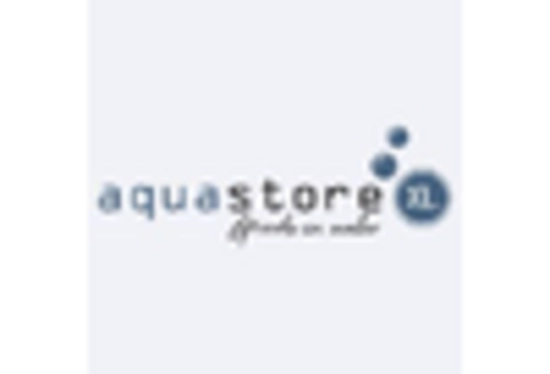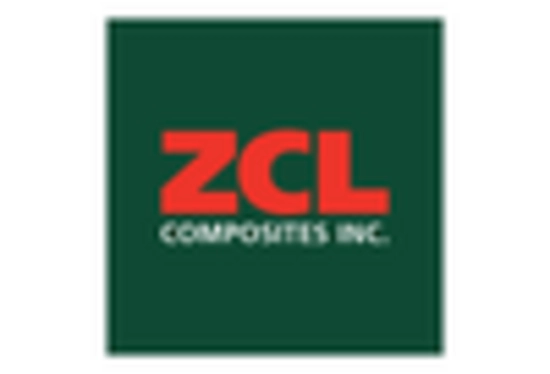Growing Environmental Regulations
The Fiberglass Tanks Market is influenced by the growing environmental regulations aimed at reducing pollution and promoting sustainable practices. As regulatory bodies implement stricter guidelines for waste management and chemical storage, industries are increasingly turning to fiberglass tanks due to their environmentally friendly properties. These tanks are designed to minimize leakage and contamination, aligning with the objectives of various environmental policies. The market is likely to witness a shift as companies prioritize compliance with these regulations, potentially leading to a rise in the adoption of fiberglass tanks. This trend not only supports environmental sustainability but also enhances the reputation of companies committed to responsible practices.
Rising Demand for Water Storage Solutions
The Fiberglass Tanks Market is experiencing a notable increase in demand for water storage solutions. This trend is largely driven by the growing need for efficient water management systems in various sectors, including agriculture, municipal, and industrial applications. As water scarcity becomes a pressing issue, the adoption of fiberglass tanks, known for their durability and resistance to corrosion, is likely to rise. According to recent estimates, the water storage segment is projected to account for a significant share of the fiberglass tanks market, potentially reaching a valuation of several billion dollars by the end of the decade. This demand is further fueled by the increasing awareness of sustainable practices, prompting industries to invest in long-lasting storage solutions that minimize environmental impact.
Expansion of the Chemical Processing Industry
The Fiberglass Tanks Market is poised for growth due to the expansion of the chemical processing sector. Fiberglass tanks are favored in this industry for their ability to withstand harsh chemicals and extreme temperatures, making them ideal for storing and transporting various substances. As the chemical processing industry continues to evolve, with a projected growth rate of over 4% annually, the demand for fiberglass tanks is expected to follow suit. This growth is indicative of a broader trend towards safer and more efficient storage solutions, as companies seek to enhance operational efficiency while adhering to stringent safety regulations. The versatility of fiberglass tanks in accommodating a wide range of chemicals further solidifies their position in this expanding market.
Technological Innovations in Tank Manufacturing
The Fiberglass Tanks Market is experiencing a wave of technological innovations that enhance the manufacturing processes and product offerings. Advances in materials science and engineering have led to the development of fiberglass tanks that are lighter, stronger, and more resistant to environmental factors. These innovations are likely to improve the overall performance and lifespan of fiberglass tanks, making them more appealing to various industries. As manufacturers adopt cutting-edge technologies, the market is expected to expand, with new designs and functionalities catering to specific needs. This evolution in tank manufacturing not only boosts the competitiveness of fiberglass tanks but also positions them as a preferred choice in an increasingly demanding market.
Increased Investment in Infrastructure Development
The Fiberglass Tanks Market is benefiting from increased investment in infrastructure development across multiple sectors. Governments and private entities are allocating substantial resources towards building and upgrading water treatment facilities, industrial plants, and agricultural systems. This trend is likely to drive the demand for fiberglass tanks, which are essential for effective storage and management of liquids in these infrastructures. Recent reports indicate that infrastructure spending is expected to rise significantly, with billions earmarked for projects that require reliable storage solutions. As these initiatives progress, the fiberglass tanks market is anticipated to see a corresponding surge in demand, reflecting the critical role these tanks play in modern infrastructure.

















Leave a Comment